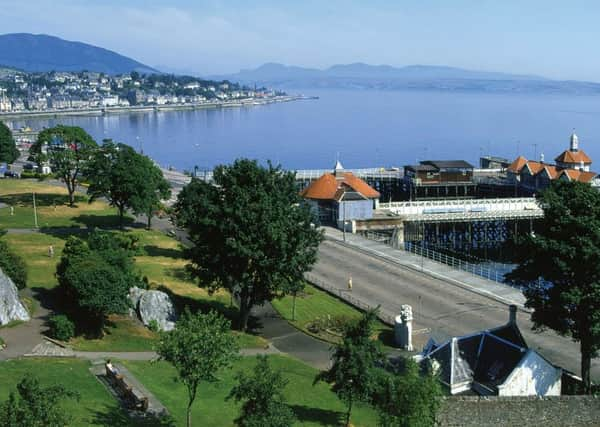Scottish towns and nuclear base in danger from rising seas


Rothesay, Ayr, Campbeltown and Troon are just some of the seaside towns at risk from encroaching tides, as well as the Trident nuclear weapons base near Helensburgh and the train station at Prestwick airport.
Internationally important coastal wildlife havens could also be lost.
Advertisement
Hide AdAdvertisement
Hide AdMeteorologists have estimated that climate change will drive a rise in sea level of 47cm around the Firth of Clyde by 2080.
Now a new study by Scottish Natural Heritage (SNH) has highlighted the threat posed to vulnerable habitats, coastal communities and infrastructure in the region from raised water levels and storm surges.
The report identifies more than 100 developed areas, designated sites, roads and railways where action should be taken to avoid the most serious impacts.
Communities that could be in danger include Greenock, Gourock, Campbeltown, Lochgilphead, Dunoon, Faslane, Inverkip, Largs, Stevenson, Irvine, Troon, Prestwick, Ayr, Girvan, Rothesay and Kelburn.
There are potential impacts at protected nature sites, including mudflats and saltmarshes at the Inner Clyde Special Protection Area.
The publication also considers measures known as “managed realignment” at four sites around the Clyde.
The technique involves deliberately allowing river, estuary and or coastal water to extend beyond current flood defences, and has previously been used in Scotland on the Cromarty Firth.
“As part of our role protecting all of nature for all of Scotland, we conduct regular research into the long-term future of Scotland’s natural environment,” said Mike Cantlay, chair of SNH.
Advertisement
Hide AdAdvertisement
Hide Ad“We have identified more than 100 locations in the west of Scotland that may be at greater flood risk due to rising tides over the next 50 years.
“Having this advance notice allows partners to work together to address potential issues and plan ahead for ways to mitigate these risks.”
The report marks “a significant step forward” in understanding the impacts of higher sea levels, according to James Curran, chair of Climate Ready Clyde, an initiative aimed at preparing for the effects of climate change in the region.
He said: “It makes it clear that we must urgently increase efforts to reduce carbon emissions, whilst also making the challenging choices needed to adapt.”
He said collaboration between local councils, developers, infrastructure operators and communities would be “crucial” to finding the best way forward for affected communities.
Clyde Marine Planning Partnership, which has a membership of more than 20 organisations, helped produce the report.
Isabel Glasgow, chair of the group, said: “Regional marine plans must consider potential climate change impacts and seek to adapt. In some cases natural coastal protection can provide a solution.
“It is important that land and marine planners work together on these issues to ensure that coastal and marine development is in the right place.”
Advertisement
Hide AdAdvertisement
Hide AdProfessor Des Thompson, principal adviser on biodiversity for SNH, added: “There are risks, for sure, but there are opportunities to allow nature to help us cope with climate change.
“We know that rising sea levels and changing rainfall patterns and intensities are likely to increasingly affect nature and society.
“This work forewarns us and helps us plan for these possible changes.”